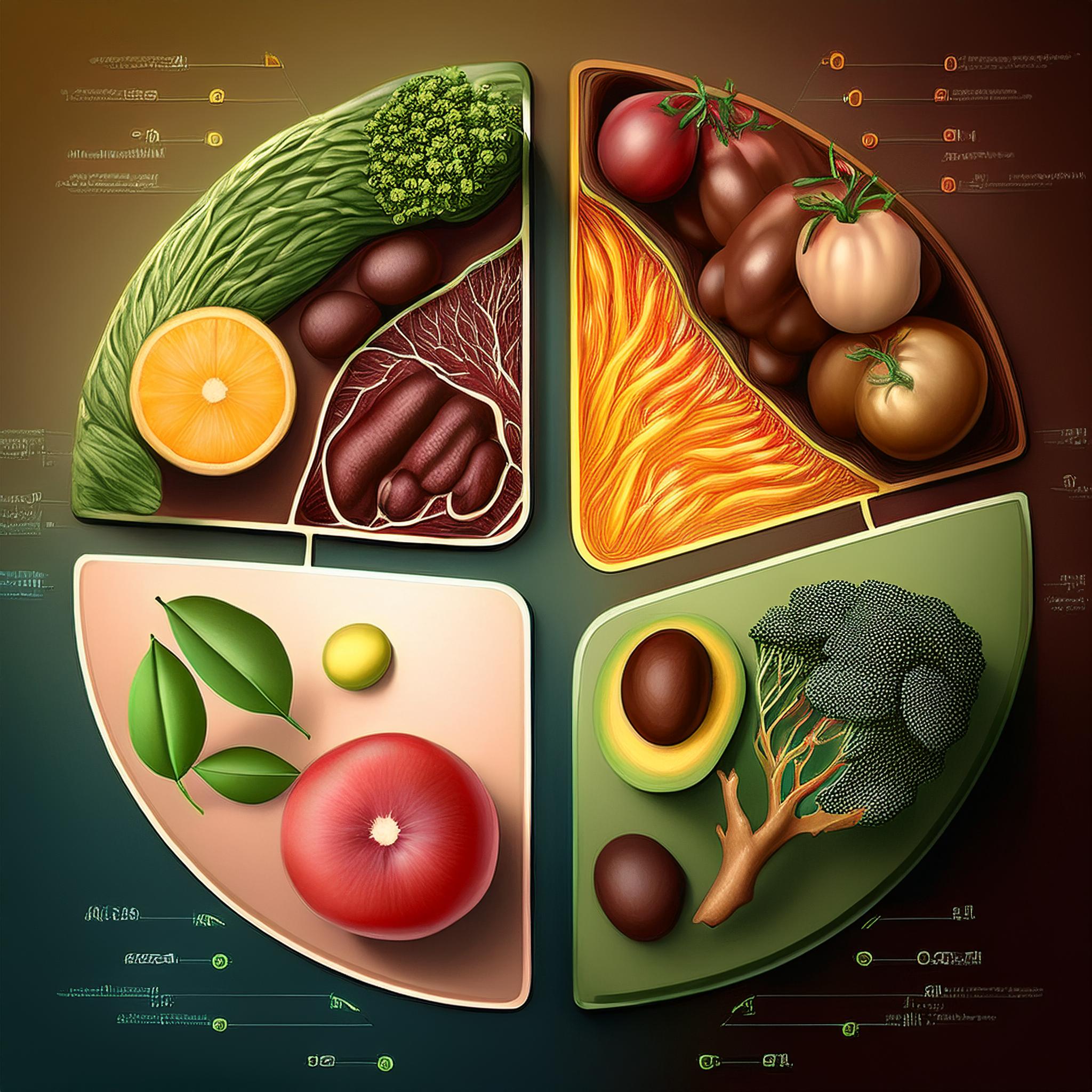Development of Local Foodstuff-Based Complementary Food Porridge MP-ASI "SITOLE" Products as an Effort to Manage Stunting
Downloads
One of the causes of stunting is poor nutritional intake in infancy and recurrent illnesses due to an unhealthy environment. Mothers of under-five children are the potential strategic target to be empowered to manage stunting. They have to be empowered to meet nutritional needs during infancy. Complementary breast milk food containing calcium, zinc, selenium, iodine, Fe, protein, and phosphorus can be developed using local foodstuffs. This study aimed to investigate the impact of community empowerment training on the knowledge improvement of mothers regarding the development of locally sourced complementary feeding products (MP-ASI) as an intervention to address stunting issues and to formulate a nutrient-rich complementary food product for infants aged 6-12 months. The research design employed was a quasi-experimental study with a pre-and post-test with a control group design. The study subjects were mothers with infants aged 6-12 months residing in Triharjo Village, Kapanewon Pandak, who met the inclusion criteria and were willing to participate. Mothers who were unable to read and write were excluded from the study. The study was conducted in Triharjo Village, Kapanewon Pandak, Bantul, from April to July 2022. A total of 54 respondents, selected through simple random sampling, were included as the study sample out of 100 families population. Knowledge data were collected using a questionnaire as the data collection instrument and analyzed using the Dependent T-Test and Independent T-Test at a 95% confidence level. The results indicated a significant difference in knowledge improvement (delta) between the treatment and control groups. A locally sourced complementary food product for infants aged 6-12 months, named "SITOLE" porridge, was developed as an outcome. The development data of the MP-ASI product (Sitole porridge) were compiled using a group discussion method.
Aulia, A., Puspitasari, D. I., Huzaimah, N., Wardita, Y., & Sandi, A. P. (2021). Stunting dan Faktor Ibu. Journal Of Health Science (Jurnal Ilmu Kesehatan), 6(1), 27-31. https://doi.org/10.24929/jik.v6i1.1498
Aguayo, V. M., Nair, R., Badgaiyan, N., & Krishna, V. (2016). Determinants of stunting and poor linear growth in children under 2 years of age in India: An in-depth analysis of Maharashtra's comprehensive nutrition survey. Maternal and Child Nutrition, 12, 121–140. https://doi.org/10.1111/mcn.12259
Andari, W., Siswati, T., & Paramashanti, B. A. (2020). Tinggi Badan Ibu Sebagai Faktor Risiko Stunting Pada Anak Usia 24-59 Bulan Di Kecamatan Pleret Dan Kecamatan Pajangan, Kabupaten Bantul, Yogyakarta. Journal of Nutrition College, 9(4), 235–240. https://doi.org/10.14710/jnc.v9i4.26992
Astutik, D. (2018). Faktor Risiko Kejadian Stunting Pada Anak Balita Usia 24-59 Bulan (Studi Kasus Di Wilayah Kerja Puskesmas Gabus Ii Kabupaten Pati Tahun 2017). Jurnal Kesehatan Masyarakat (e-Journal), 6(1), 409–418. https://doi.org/10.14710/jkm.v6i1.19900
Crookston, B. T., Penny, M. E., Alder, S. C., Dickerson, T. T., Merrill, R. M., Stanford, J. B., Dearden, K. A. (2010). Children who recover from early stunting and children who are not stunted demonstrate similar levels of cognition. Journal of Nutrition, 140(11), 1996–2001. https://doi.org/10.3945/jn.109.118927
Dinas Kesehatan Bantul. (2019). Profil Kesehatan Puskesmas Pandak II Tahun 2019. Puskesmas Pandak II. Yogyakarta: Dinas Kesehatan Bantul.
Dinas Kesehatan Bantul. (2020). Laporan Survey Status Gizi Tahun 2020. Yogyakarta: Dinas Kesehatan Bantul.
Dinas Kesehatan DIY. (2021). Profil Kesehatan DIY Tahun 2021. Yogyakarta: Dinas Kesehatan DIY.
Dubois, L., Ohm Kyvik, K., Girard, M., Tatone-Tokuda, F., Pérusse, D., Hjelmborg, J., ... & Martin, N. G. (2012). Genetic and environmental contributions to weight, height, and BMI from birth to 19 years of age: an international study of over 12,000 twin pairs. PLOS one, 7(2), e30153. https://doi.org/10.1371/journal.pone.0030153
García Cruz, L. M., González Azpeitia, G., Reyes Súarez, D., Santana Rodríguez, A., Loro Ferrer, J. F., & Serra-Majem, L. (2017). Factors associated with stunting among children aged 0 to 59 months from the central region of Mozambique. Nutrients, 9(5), 1–16. https://doi.org/10.3390/nu9050491
Kartini, A. (2016). Kejadian Stunting Dan Kematangan Usia Tulang Pada Anak Usia Sekolah Dasar Di Daerah Pertanian Kabupaten Brebes. KEMAS: Jurnal Kesehatan Masyarakat, 11(2), 214-221. https://doi.org/10.15294/kemas.v11i2.4271
Kementerian Kesehatan Republik Indonesia. (2018). Laporan Riset Kesehatan Dasar (Riskesdas) Tahun 2018. Jakarta: Kementerian Kesehatan Republik Indonesia.
Kementerian Desa Pembangunan Daerah Tertinggal. (2017). Buku Saku dalam Penanganan Stunting. Jakarta: Kementerian Desa Pembangunan Daerah Tertinggal. Retrieved from https://docplayer.info/75668277-Buku-saku-desa-dalam-penanganan-stunting.html
Kusumawati, E., Rahardjo, S., & Sari, H. P. (2015). Model pengendalian faktor risiko stunting pada anak bawah tiga tahun. Kesmas: Jurnal Kesehatan Masyarakat Nasional (National Public Health Journal), 9(3), 249-256. http://dx.doi.org/10.21109/kesmas.v9i3.572
Latif, R. V. N., & Istiqomah, N. (2017). Determinan Stunting Pada Siswa Sd Di Kabupaten Pekalongan. Unnes Journal of Public Health, 6(1), 68-74. https://doi.org/10.15294/ujph.v6i1.14108
Manggala, A. K., Kenwa, K. W. M., Kenwa, M. M. L., Sakti, A. A. G. D. P. J., & Sawitri, A. A. S. (2018). Risk factors of stunting in children aged 24-59 months. Paediatrica Indonesiana, 58(5), 205–212. https://doi.org/10.14238/pi58.5.2018.205-12
Notoatmodjo. (2012). Pendidikan dan perilaku kesehatan. Jakarta: Rineka Cipta.
Notoatmodjo. (2014). Promosi kesehatan dan ilmu perilaku. Jakarta: Rineka Cipta.
Nursalam. (2020). Metodologi Penelitian Ilmu Keperawatan (5th ed.). Jakarta: Salemba Medika.
Olsa, E. D., Sulastri, D., & Anas, E. (2018). Hubungan sikap dan pengetahuan ibu terhadap kejadian stunting pada anak baru masuk Sekolah Dasar di kecamanatan Nanggalo. Jurnal Kesehatan Andalas, 6(3), 523-529. https://doi.org/10.25077/jka.v6i3.733
Picauly, I., & Toy, S. M. (2013). Analisis determinan dan pengaruh stunting terhadap prestasi belajar anak sekolah di Kupang dan Sumba Timur, NTT. Jurnal gizi dan pangan, 8(1), 55-62. https://doi.org/10.25182/jgp.2013.8.1.55-62
Ratu, N., Punuh, M., & Malonda, N. S. (2018). Hubungan Tinggi Badan Orangtua Dengan Kejadian Stunting Pada Anak Usia 24-59 Bulan Di Kecamatan Ratahan Kabupaten Minahasa Tenggara. Jurnal KESMAS, 7(4), 24–59.
Rochmah, A. M. (2017). Faktor-Faktor Yang Berhubungan Dengan Stunting Pada Balita Usia 24-59 Bulan Di Wilayah Kerja Puskesmas Wonosari I. Naskah Publikasi, Yogyakarta: Universitas Aisyiyah Yogyakarta.
Rothman, K. J. (2007). Journal of Epidemiology. Public Health, 17(6), 587–592. https://doi.org/10.1093/aje/155.5.478
Salman, F. Y. A. Y. H., Arbie, F. Y., & Humolungo, Y. (2017). Hubungan pengetahuan gizi ibu dengan kejadian stunting pada anak balita di desa Buhu kecamatan Talaga Jaya kabupaten Gorontalo. Health and Nutritions, 3. (I), 42–53.
Sinha, B., Taneja, S., Chowdhury, R., Mazumder, S., Rongsen-Chandola, T., Upadhyay, R. P., … Bhan, M. K. (2018). Low-birthweight infants born to short-stature mothers are at additional risk of stunting and poor growth velocity: Evidence from secondary data analyses. Maternal and Child Nutrition, 14(1), 1–9. https://doi.org/10.1111/mcn.12504
Sugiyono. (2018). Metode Penelitian Pendidikan Pendekatan Kuantitatif, Kualitatif dan R & D. Jakarta: Alfabeta.
Torlesse, H., Cronin, A. A., Sebayang, S. K., & Nandy, R. (2016). Determinants of stunting in Indonesian children: Evidence from a cross-sectional survey indicate a prominent role for the water, sanitation and hygiene sector in stunting reduction. BMC Public Health, 16(1), 1–11. https://doi.org/10.1186/s12889-016-3339-8
Wawan & Dewi. (2011). Teori dan Pengukuran Pengetahuan, Sikap, dan Perilaku Manusia (2nd ed.). Yogyakarta: Nuha Medika.
Wulandari, W., Budiastutik, I., & Alamsyah, D. (2016). Hubungan karakteristik sosial ekonomi dan pola asuh pemberian makan terhadap kejadian stunting pada balita di Puskesmas Ulak Muid Kabupaten Melawi. Jumantik, 3(2). Retrieved from https://openjurnal.unmuhpnk.ac.id/index.php/JJUM/article/view/365
Yanti, N. K. R. R., Kartinawati, K. T., & Darwata, I. W. (2022). Faktor-Faktor Yang Mempengaruhi Kejadian Stunting pada Anak Usia 2-5 Tahun di Puskesmas Ubud 1 Gianyar. E-Journal AMJ (Aesculapius Medical Journal), 2(1), 26–34.
Zikria, W., Masrul, M., & Bustami, L. E. S. (2018). The Association Between Mother's Care Practices With Stunting Incident In Children Age 12-35 Months In Air Dingin Primary Health Center Padang 2018. Journal of Midwifery, 3(2), 176-193. https://doi.org/10.25077/jom.3.2.176-193.2018
Copyright (c) 2023 JURNAL INFO KESEHATAN

This work is licensed under a Creative Commons Attribution-NonCommercial-ShareAlike 4.0 International License.
Copyright notice
Ownership of copyright
The copyright in this website and the material on this website (including without limitation the text, computer code, artwork, photographs, images, music, audio material, video material and audio-visual material on this website) is owned by JURNAL INFO KESEHATAN and its licensors.
Copyright license
JURNAL INFO KESEHATAN grants to you a worldwide non-exclusive royalty-free revocable license to:
- view this website and the material on this website on a computer or mobile device via a web browser;
- copy and store this website and the material on this website in your web browser cache memory; and
- print pages from this website for your use.
- All articles published by JURNAL INFO KESEHATAN are licensed under the Creative Commons Attribution 4.0 International License. This permits anyone to copy, redistribute, remix, transmit and adapt the work provided the original work and source is appropriately cited.
JURNAL INFO KESEHATAN does not grant you any other rights in relation to this website or the material on this website. In other words, all other rights are reserved.
For the avoidance of doubt, you must not adapt, edit, change, transform, publish, republish, distribute, redistribute, broadcast, rebroadcast or show or play in public this website or the material on this website (in any form or media) without appropriately and conspicuously citing the original work and source or JURNAL INFO KESEHATAN prior written permission.
Permissions
You may request permission to use the copyright materials on this website by writing to jurnalinfokesehatan@gmail.com.
Enforcement of copyright
JURNAL INFO KESEHATAN takes the protection of its copyright very seriously.
If JURNAL INFO KESEHATAN discovers that you have used its copyright materials in contravention of the license above, JURNAL INFO KESEHATAN may bring legal proceedings against you seeking monetary damages and an injunction to stop you using those materials. You could also be ordered to pay legal costs.
If you become aware of any use of JURNAL INFO KESEHATAN copyright materials that contravenes or may contravene the license above, please report this by email to jurnalinfokesehatan@gmail.com
Infringing material
If you become aware of any material on the website that you believe infringes your or any other person's copyright, please report this by email to jurnalinfokesehatan@gmail.com.





























